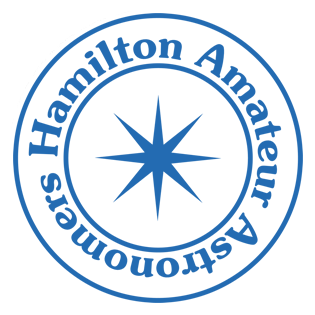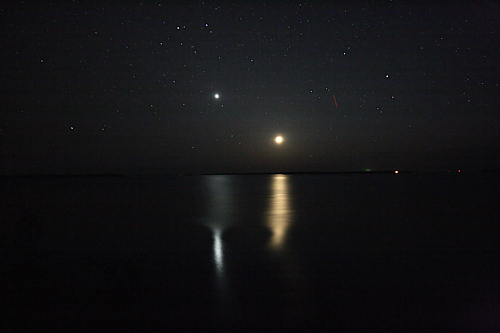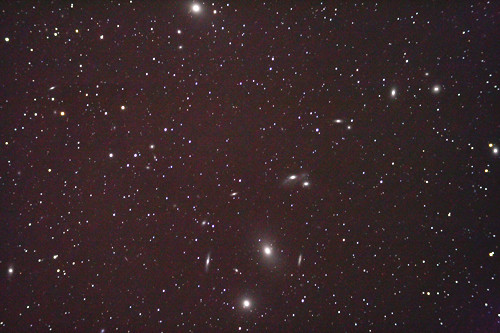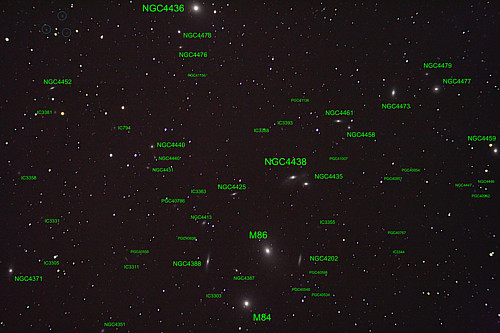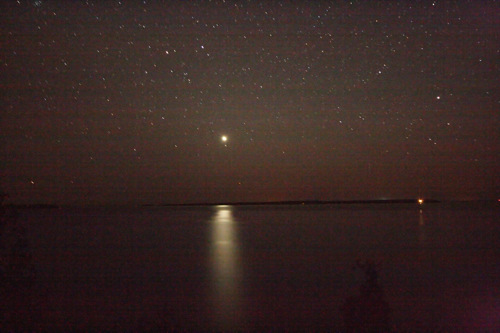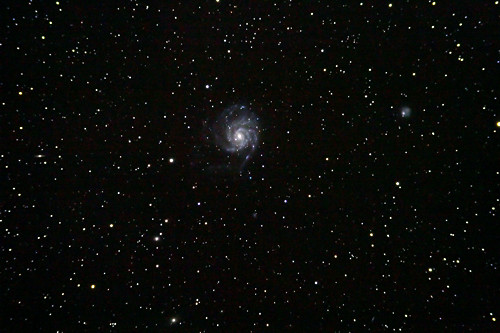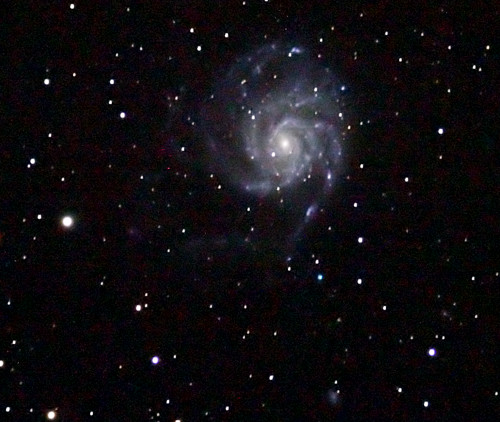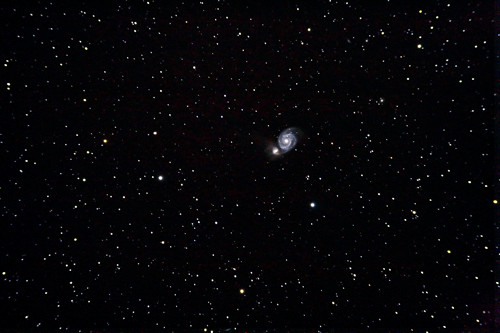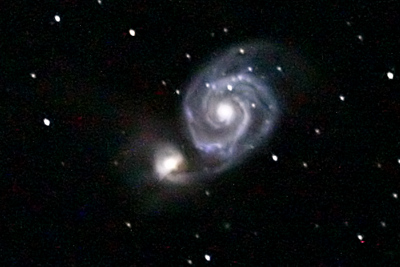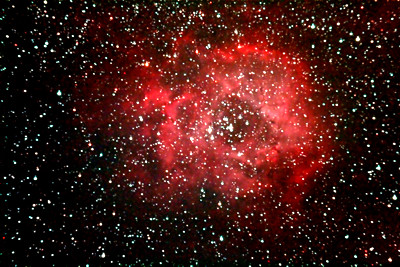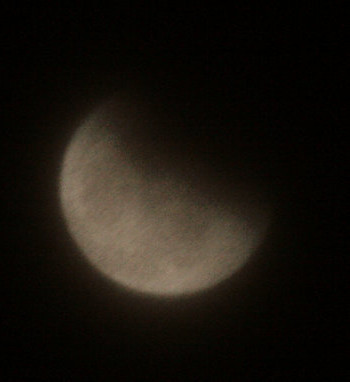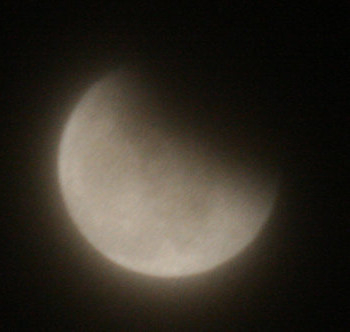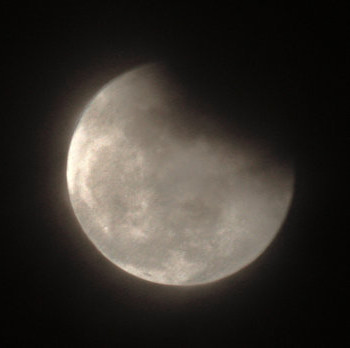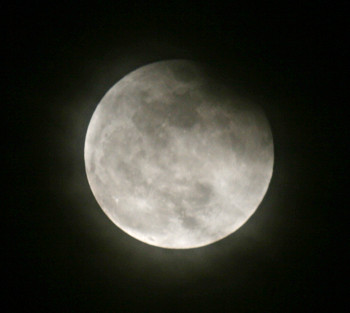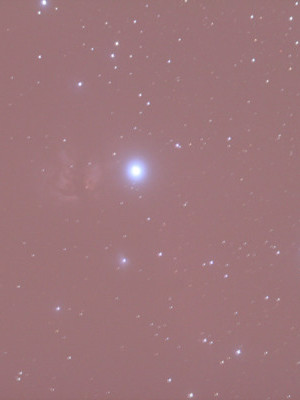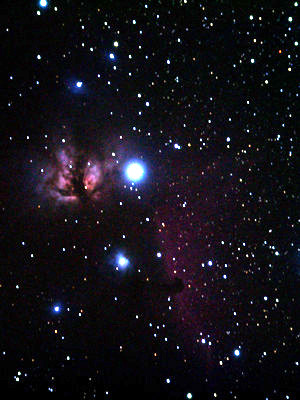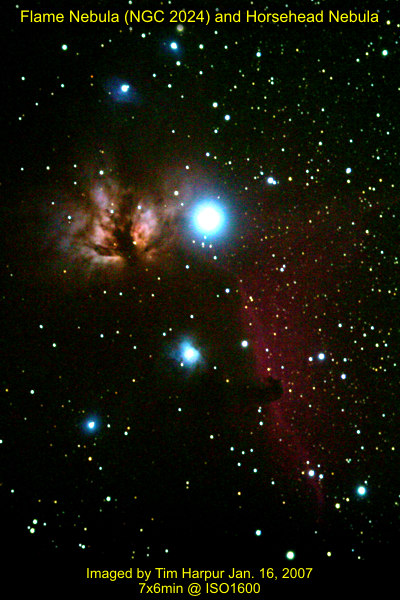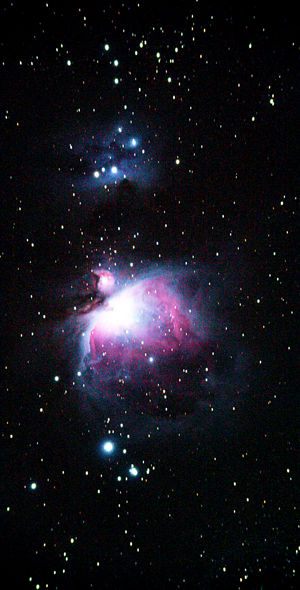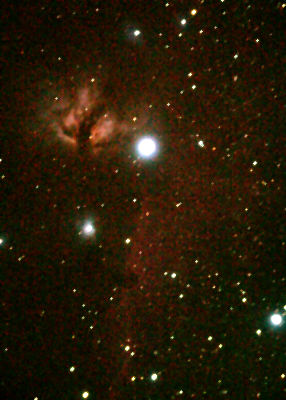I decided to use my laptop to assist with focusing last night (no special software – just the ability to see the image on a large screen) – this helped drastically – I used Jupiter as my focus object (shown below cropped but at FULL size – Jupiter is really tiny with my widefield setup). Then I moved on to the Eagle Nebula (Kerry this time it is the Eagle and not the Seagull) and took 2 x 5 minute and 2 x 10 minute exposures – I also used my LPR filter – the focus and clarity was so much better than the previous night I decided to re-image the Lagoon/Trifid – 1 x 5 minutes, 2 x 10 minutes, and (ooops – forgot to start the timer) 1 x 15 minutes. Even under a darksky sight such as Tobermory the LPR really made an improvement in contrast. I was going to do a set of the Omega (or Swan) Nebula but my camera battery ran out after the first 5 minute exposure so I only got one frame and thus can’t stack it. A good 4 hours of observing and imaging.
My focus target (at full size cropped):

M17: The Omega (or Swan) Nebula – single exposure:
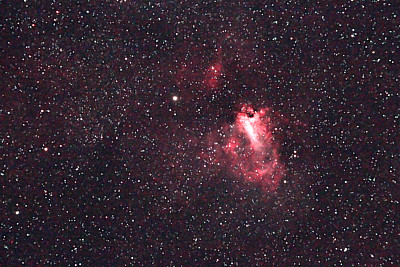
M16: The Eagle Nebula – 2 x 5min, 2 x 10min:
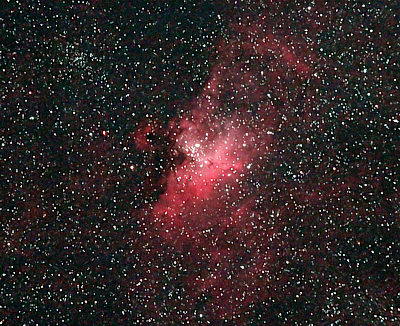
…close up of the Eagle showing Pillars of Creation:
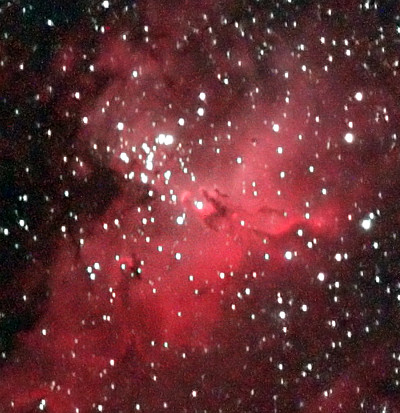
I will post the last image once processed – larger versions are being uploaded to my gallery.
